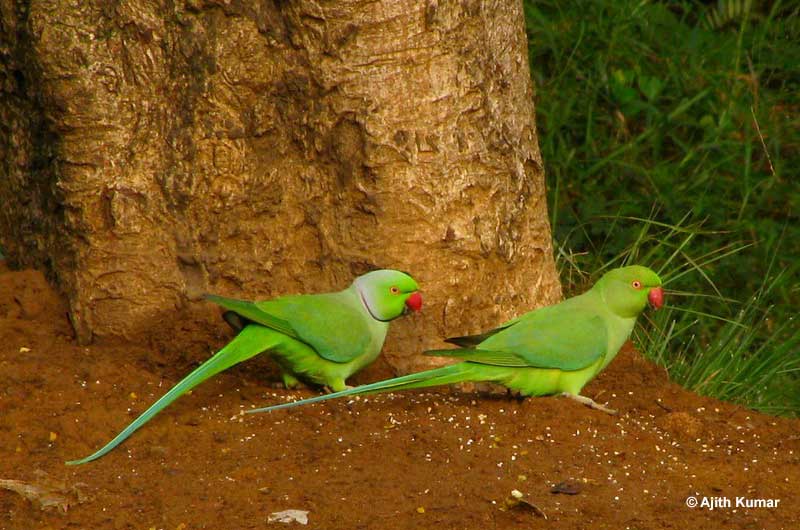
Female parakeets do not have a specific name, but they belong to the parrot family, are known for their exceptional vocal abilities, and are considered one of the most talkative bird species in the world. They possess an impressive vocabulary, estimated to reach up to 2,000 words.
But are female parakeets identifiable? What are their lives like?
Let’s look at female parakeets and their role as mothers and partners.
On this page
Female vs. Male Parakeets
The main differences between female and male parakeets are their vocalizations, behaviors, and cere colors.
They’re similar enough that it can be easy to confuse them.
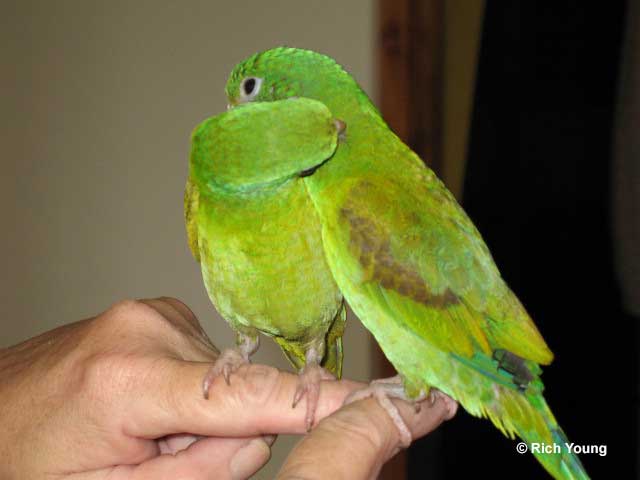
Some parakeets look so similar it’s nearly impossible to identify which one is male and which one female. Photograph © Rich Young
Scientific information
| Female Parakeet | Male Parakeet | |
| Size | Female parakeets tend to be smaller than male parakeets. A female parakeet is usually around 1.1 ounces. | Male parakeets tend to be a little bit bigger than female parakeets. A male parakeet is usually around 1.4 ounces. |
| Vocalizations | Female parakeets are not as vocal as male parakeets. They tend to make less noise and usually produce the same call. | Male parakeets are more vocal than female parakeets. They tend to make vocalize more and will mimic many sounds. |
| Behavior | Female parakeets are not as active as male parakeets. Additionally, they’re not as open to being handled and are known to be more aggressive and territorial. | Male parakeets are more active. They’re open to being handled and are playful and energetic. It’s not uncommon to see head bobbing and wing flicking from them. |
| Cere Color | Adult female parakeets have white to brown ceres, although occasionally they may have a lavender hue. | Adult male parakeets have ceres that range from blue to purple. |
Plumage And Ceres
Although both male and female parakeets have vibrant feathers, minor distinctions in their coloring can help determine their gender.
Generally, male parakeets tend to display more vivid colors compared to females.
For instance, male parakeets often have vibrant green or blue feathers on their head and wings. Females may have comparatively muted tones of these colors.
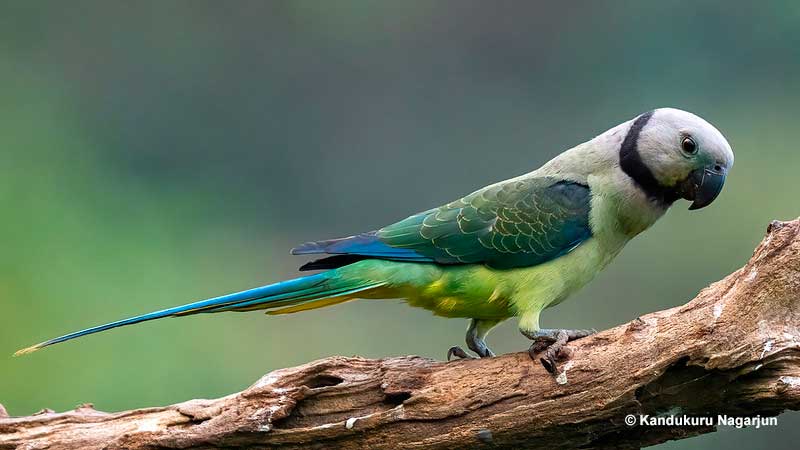
Identifying between males and females can be especially tricky at times. Photograph © Kandukuru Nagarjun
The area of skin above the beak that surrounds the nasal openings is known as the cere. The color of the cere can vary and is generally well-defined once parakeets reach 1 year of age. During mating season, the cere becomes more vibrant in color.
In juvenile parakeets, both males and females have ceres that are light pink in color. Typically, adult male parakeets have ceres that range from purple to blue. Adult female parakeets, on the other hand, have brown to white ceres. However, they sometimes may have a lavender hue. The age and hormones of a female bird influence the color of the cere.
Females Are Not As Vocal
In general, female parakeets don’t vocalize as much as males do. They typically prefer to stick to a particular type of vocalization, often characterized by a call that can sound somewhat excited and fussy.
Male parakeets are more inclined to engage in mimicry and will attempt to imitate various sounds they encounter, including human speech.
Behavior
Female parakeets are less active overall in comparison to males. However, they have been known to display more aggression and territorial tendencies when safeguarding their offspring, eggs, or nesting box. They’re not as happy as males to be handled, either.
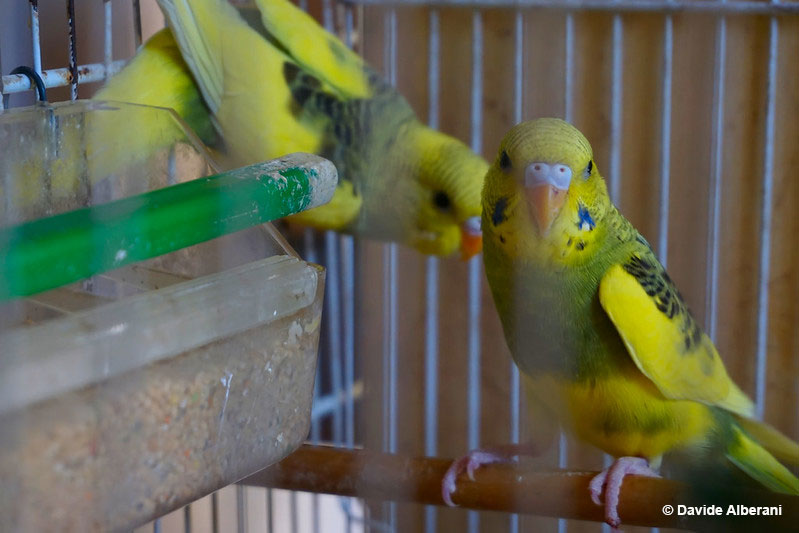
On the other hand, male parakeets tend to have high levels of playfulness and energy. They often engage in expressive behaviors like wing flicking and head bobbing more frequently than female birds. Additionally, males are commonly more receptive to handling.
How To Tell A Younger Parakeet’s Gender?
Determining a young parakeet’s gender can be a challenge. In their early stages of life, male and female parakeets appear identical regarding their physical characteristics, making it difficult to differentiate them.
However, we would like to mention that even as these birds mature into adults, determining their sex remains challenging. In various bird species, notable differences in coloration serve as prominent gender indicators.
Related: How Long Do Parakeets Live?
Male and female birds often exhibit strikingly different plumage patterns and colors. However, parakeets differ in this regard, as their various color mutations make it difficult to distinguish between male and female birds.
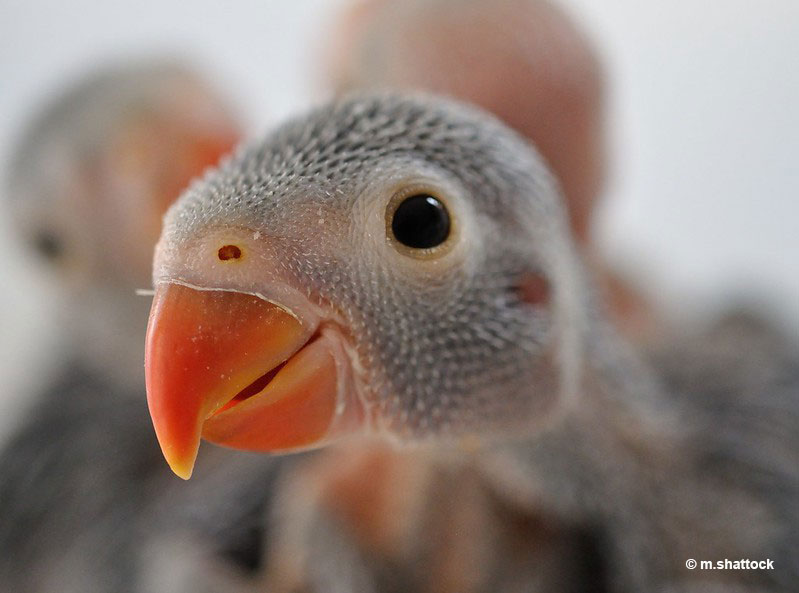
Lifecycle
Parakeet nests are relatively simple. The birds are happy if the space can accommodate one adult parakeet and a clutch of 5 to 8 eggs. In the wild, they’ve been observed using fence posts with holes and even logs on the ground as nesting sites.
In the wild, the responsibility of incubating the eggs is given to the female, who diligently sits on the clutch while the male gathers food for her.
Parakeet eggs hatch at a pace of 1 per day. The first egg typically hatches after 17 to 19 days. Newly hatched chicks are blind and born without feathers. Their initial nourishment comes from a liquid produced in the female’s crop, often referred to as parakeet milk. This first meal is crucial because it’s rich in antibodies and nutrients. The male bird will begin feeding the chicks directly when they reach 3 weeks of age.
Due to 1 egg hatching at a time, a parakeet nest will contain chicks of varying sizes. Unlike many other bird species, the chances of the younger parakeets surviving are pretty high. In fact, the female will prioritize feeding the smaller chicks over the older ones.
Female Parakeet – Frequently Asked Questions
How can you tell a female parakeet?
You can tell a parakeet is female by listening to its vocalizations, looking at its behaviors, and what the birds cere color is. Female birds are less vocal than males, they tend to be more aggressive and territorial, and their cere tends to be white or brown but can sometimes have a purple hue.
What color is a female parakeet’s beak?
Female parakeets have yellow beaks, but the cere, the area of skin above the beak that surrounds the nasal openings, tends to be either white or brown.
Do female parakeets talk?
No, female parakeets usually don’t learn to talk.
Do female parakeets lay eggs without a male?
Female parakeets can lay eggs without a male, but it’s not normal.
At what age can you tell a parakeet’s gender?
You can tell a parakeet’s gender when they reach the age of 2 – 3 weeks old.
Conclusions
Even though female and male parakeets look similar, they have some distinctive differences that can help you tell them apart.
Males are larger, more vocal, and more playful. Females are smaller, less vocal, and tend to be more aggressive and territorial.
It’s not impossible to tell the gender of a parakeet, but it can be tough. With the information listed above, we hope you’ll have a better chance of identifying whether a parakeet is a male or a female.


Joy
Saturday 13th of April 2024
You are so wrong about female parakeets ability to talk. They can actually mimic human speech more clearly than the male and there was a female recorded in the UK with a vocabulary of over 2000 words.